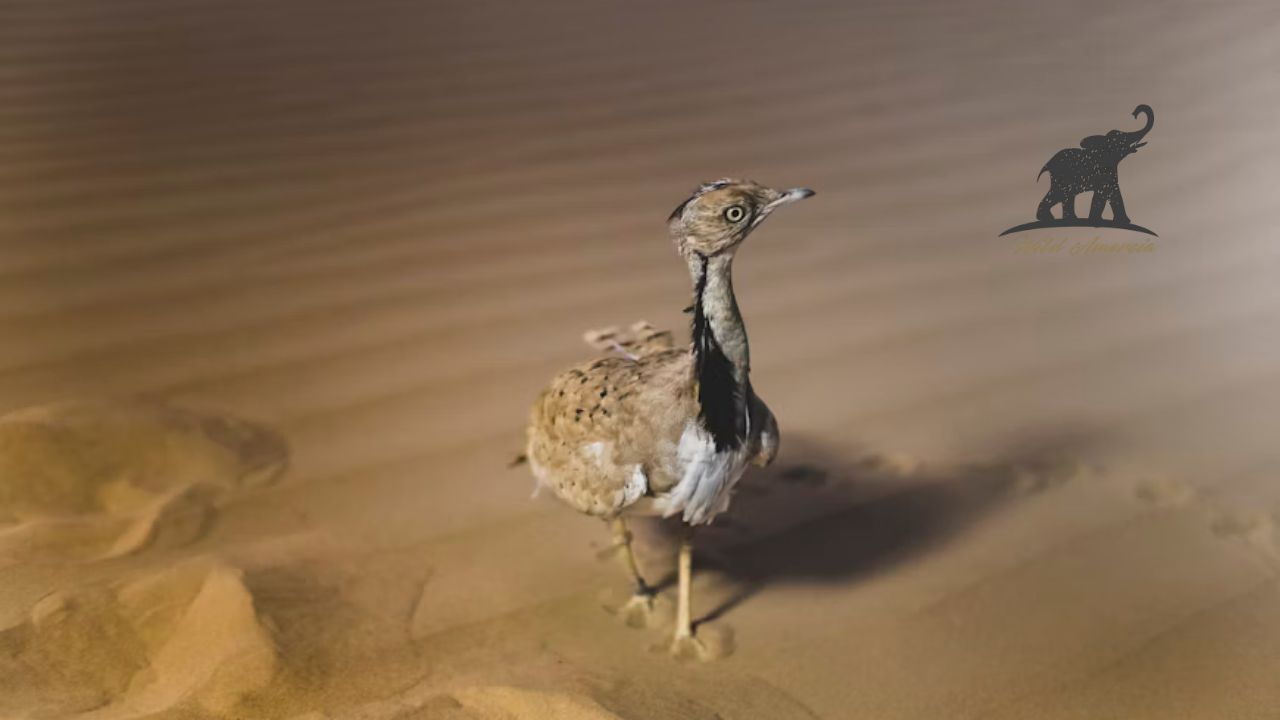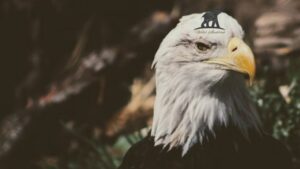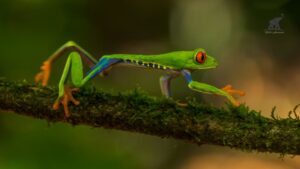The vast, arid landscapes of Asia and North Africa hold many secrets, but few are as captivating as the elusive houbara bird. This remarkable creature, a master of camouflage and survival, has fascinated cultures for centuries, inspiring both awe and controversy. Its story is a complex tapestry woven with threads of ancient tradition, modern conservation, and intense debate.
The houbara bustard bird is not just another desert dweller; it’s a symbol of heritage, a prized quarry in royal hunts, and a species at the center of significant ecological efforts. Understanding the houbara bird means exploring its unique biology, its role in different societies, and the urgent measures being taken to secure its future.
Houbara Bird at a Glance
| Feature | Details |
| Common Name | Houbara Bustard, MacQueen’s Bustard, Asian Houbara |
| Scientific Name | Chlamydotis macqueenii |
| Family | Otididae (Bustards) |
| Habitat | Arid and semi-arid regions, steppes, and sandy deserts |
| Geographic Range | From the Sinai Peninsula through the Middle East to Central Asia and Mongolia |
| Conservation Status | Vulnerable |
| Diet | Omnivorous; insects, seeds, small reptiles, and plants |
| Lifespan | Approximately 10-15 years in the wild |
Unveiling the Houbara Bustard Bird
The houbara bird is a medium-sized bustard, exquisitely adapted to its harsh desert environment. Its appearance is a marvel of natural engineering, designed for stealth and survival against predators and the elements.
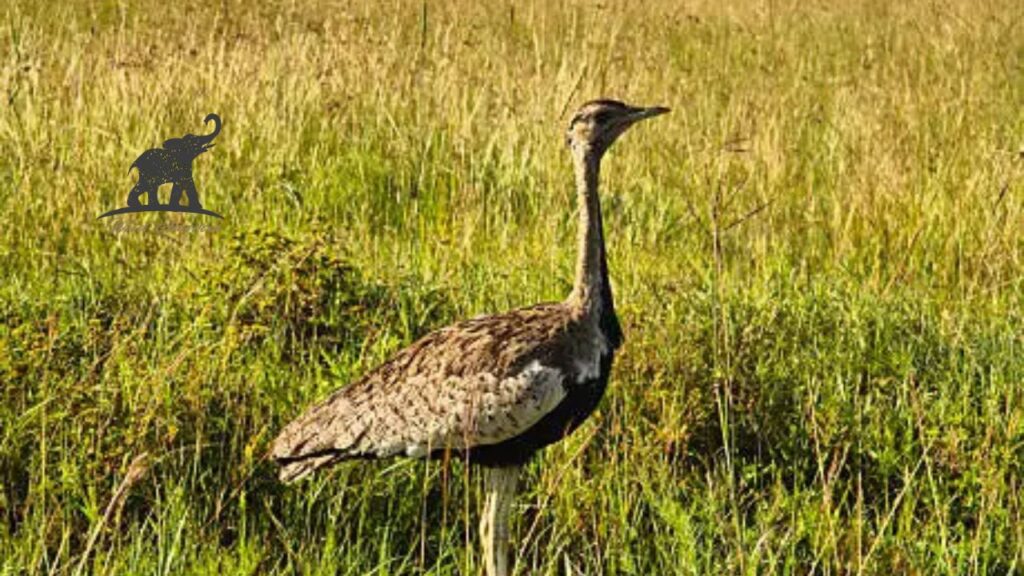
Physical Characteristics and Adaptations
The most striking feature of the houbara bird is its sandy-brown plumage, intricately patterned with black and white markings. This coloration provides exceptional camouflage, allowing it to blend seamlessly into the desert floor. When threatened, the houbara bird often freezes, becoming nearly invisible to the untrained eye.
Males are slightly larger than females and possess a spectacular crest of black and white feathers on their neck. During their elaborate courtship displays, males puff out these feathers into a stunning ruff, creating a breathtaking visual spectacle to attract mates. This display is a rare and incredible sight for those lucky enough to witness it.
Their long legs are built for walking and running across vast distances in search of food. While they are capable flyers, houbara birds prefer to stay on the ground, using their powerful legs to escape danger before taking to the air as a last resort.
The Houbara Bird Life Cycle
The life cycle of a houbara bird is a testament to resilience. Breeding season typically occurs in the spring, when males perform their mesmerizing dances. After mating, the female scrapes a shallow nest on the ground, often near a shrub for minimal cover, and lays a clutch of two to four eggs.
Incubation is solely the female’s responsibility and lasts for about 23 days. The chicks are precocial, meaning they can walk and feed themselves shortly after hatching. They stay with their mother for several months, learning vital survival skills before becoming independent. This delicate period is when the young houbara bird is most vulnerable.
A Creature of Two Worlds: Habitat and Migration
The houbara bird’s world is defined by vast, open spaces. Understanding its habitat and migratory patterns is crucial to appreciating the challenges it faces. The Asian houbara bird is a migratory species, undertaking long and perilous journeys between its breeding and wintering grounds.
Breeding and Wintering Grounds
The primary breeding grounds for the houbara bustard birds are the cold steppes and semi-deserts of Central Asia, including countries like Kazakhstan, Uzbekistan, and Mongolia. Here, they raise their young during the warmer months.
As winter approaches, these populations embark on an arduous migration south. Their destination? The warmer climates of the Middle East and South Asia. Pakistan, in particular, serves as a major wintering ground for a significant portion of the global houbara bird population. This annual journey is a phenomenal feat of endurance.
The Houbara Bird in UAE and Pakistan
The presence of the houbara bird in the UAE and Pakistan is deeply significant, both ecologically and culturally. For centuries, these regions have welcomed the migratory birds.
- Houbara Bird in UAE: The UAE has a deep historical connection to the houbara bird, which is central to the tradition of falconry. The nation has become a global leader in conservation, with the conservation plan of houbara bird in UAE being a top priority.
- Houbara Bustard Bird in Pakistan: Pakistan is a critical habitat for wintering houbara birds. The vast landscapes of Balochistan and Punjab provide the necessary resources for the birds to survive the cold months before their return journey north. This has also made the country a focal point for houbara bird hunting.
The Great Debate: Houbara Bird Hunting
Few topics surrounding this species are as charged as houbara bird hunting. For generations, falconry has been a revered tradition in the Arab world, and the houbara bird is considered the ultimate prize.
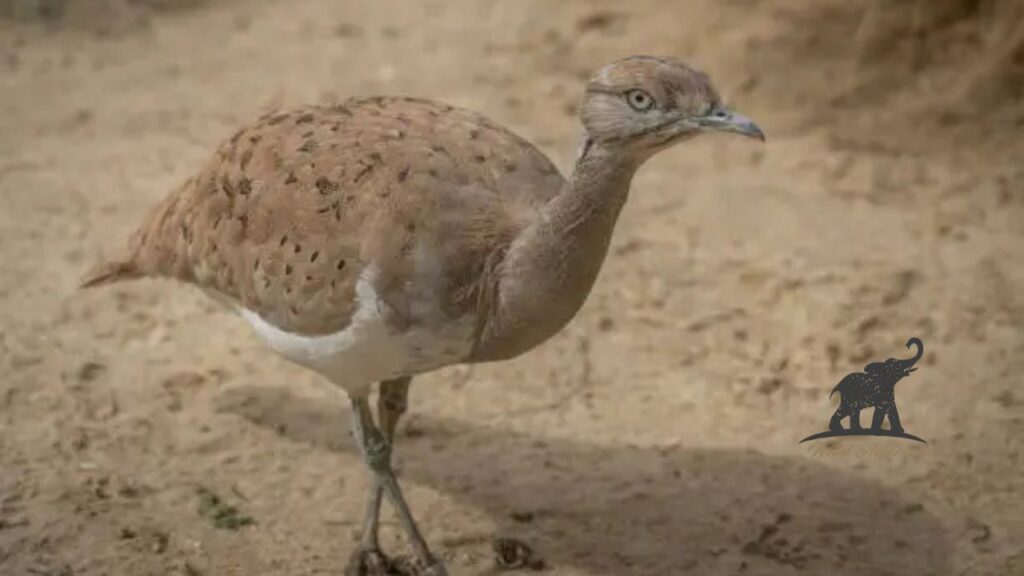
Falconry: An Ancient Tradition
Falconry is more than a sport; it is an art form passed down through generations, representing a deep connection between the falconer, their prized eagle, and the wild. The houbara bird’s elusive nature and skillful evasive maneuvers make it a challenging quarry, testing the falcon’s speed, agility, and intelligence. The hunt is a display of natural prowess, a dance between predator and prey.
Controversy and Regulation
While traditional hunts were sustainable, modern practices, including the use of advanced technology and large hunting parties, have put immense pressure on houbara bird populations. This has led to intense controversy and calls for stricter regulations.
Many countries have banned or severely restricted houbara bustard birds hunting. However, special permits are often issued in countries like Pakistan for dignitaries from the Gulf states, a practice that generates both significant revenue and considerable debate among conservationists and local communities. The regulation of houbara bird hunting remains a delicate balancing act between cultural heritage and species survival.
What is the Houbara Bird Price?
The concept of a “houbara bird price” is complex. Legally, the birds are not for sale on the open market. However, the illicit trade and the high costs associated with hunting permits create a perceived value. The houbara bird price in Pakistan, for example, is often tied to the fees paid for hunting licenses, which can run into hundreds of thousands of dollars for a limited number of birds. This high price reflects its rarity and status as a symbol of prestige.
A Story of Hope: Conservation Efforts
The decline in houbara bird populations sounded an alarm bell for conservationists worldwide. In a remarkable turnaround, dedicated efforts are now underway to ensure the species’ survival, a story of an almost symbolic rebirth for the houbara bird.
Pioneering Conservation in the UAE
The UAE has been at the forefront of houbara bird conservation. The International Fund for Houbara Conservation (IFHC) is a world-renowned initiative dedicated to restoring houbara populations. Their strategy is twofold:
- Captive Breeding Programs: The IFHC operates state-of-the-art breeding centers that produce thousands of houbara birds annually. These centers replicate the birds’ natural environment to encourage successful breeding.
- Release and Monitoring: The captive-bred houbara birds are released back into the wild across their migratory range, from Morocco to Mongolia. Each bird is often fitted with a satellite tracker to monitor its survival, migration patterns, and integration into wild populations. The houbara bird conservation in UAE is a model for global wildlife preservation.
These programs have shown incredible success, releasing tens of thousands of birds and significantly bolstering wild populations. This commitment showcases a powerful desire to preserve both the houbara bird and the cultural traditions associated with it.
Global Collaboration
Conservation is a global effort. The IFHC collaborates with governments and organizations across the houbara bird’s migratory path, including Pakistan, Kazakhstan, and other Central Asian nations. This international cooperation is vital for protecting the bird across its entire life cycle, ensuring safe passage during migration and preserving both its summer and winter habitats.
The Houbara Bird in Culture and Cuisine
Beyond the hunt, the houbara bird holds a unique place in the culture and even the cuisine of certain regions. The meat of the houbara bird is considered a delicacy and is believed to have special properties.
Why the Houbara Bird’s Meat is Eaten
In traditional Bedouin culture, the meat of the houbara bird was a source of sustenance in a harsh environment. Over time, it gained a reputation as an aphrodisiac and a source of vitality. This belief, passed down through folklore, is one of the reasons why houbara birds meat is highly sought after.
Houbara Bustard Bird Meat Benefits: Myth or Reality?
Scientifically, there is no definitive evidence to support claims that houbara bird meat has unique aphrodisiac or medicinal properties. Like other game birds, its meat is lean and rich in protein. However, the cultural belief in its benefits remains strong and continues to drive demand.
Frequently Asked Questions (FAQs)
1. What is a houbara bird?
The houbara bird, also known as the houbara bustard, is a medium-sized bird native to the arid regions of Africa and Asia. It’s famous for its beautiful plumage and its significance in traditional falconry.
2. Why is the houbara bird so important?
The houbara bustard bird holds immense cultural value, particularly in the Arab world, where it is the traditional quarry for falconers. It is also an important indicator species for the health of desert ecosystems.
3. Is hunting the houbara bird legal?
It varies by country. The species is listed as Vulnerable, and hunting is illegal in most places. However, some countries, like Pakistan, issue a limited number of special permits for regulated hunts, which is a source of ongoing debate.
4. What is being done to save the houbara bird?
Massive conservation efforts are underway, led by organizations like the UAE’s International Fund for Houbara Conservation (IFHC). They run the world’s largest captive breeding and release program for the species, successfully restoring populations in the wild.
5. Where can I find more houbara bird information?
Credible sources for houbara bird information include the websites of the IFHC, the IUCN Red List, and wildlife conservation organizations. A search for “houbara bird Wikipedia” also provides a good starting point for general facts.
A Future for the Desert Ghost
The story of the houbara bird is a powerful reminder of our complex relationship with the natural world. It is a tale of tradition, status, and the urgent need for conservation. This magnificent bird, a true ghost of the desert, has been pushed to the brink, yet it is also the focus of one of the most ambitious conservation projects in history.
The future of the houbara bird hinges on a delicate balance: respecting cultural heritage while embracing scientific conservation. The concerted efforts to breed and release these birds offer a powerful message of hope. With continued global cooperation and a shared commitment to its survival, we can ensure that the houbara bustard bird continues to grace our planet’s wild landscapes for generations to come.
Admin Recommendation
Cottonmouth Snakes in North Carolina (NC): Key Facts
The Fascinating World of Arctic Fox Fur

